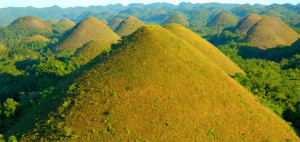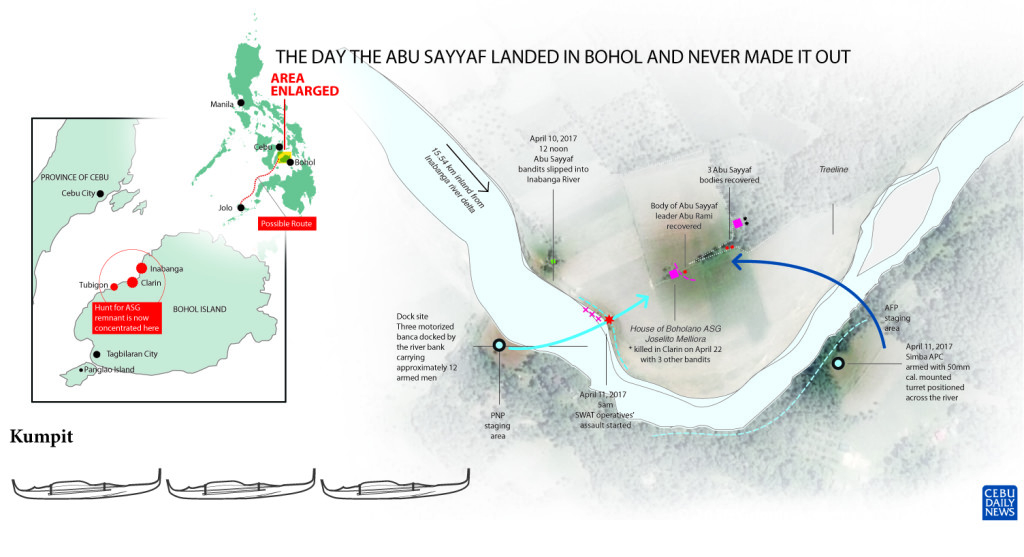
CHOCOLATE HILLS
Boholanos to rely on resilience to recover from crisis
TOURISM stakeholders in Central Visayas explore other opportunities to negate the expected losses from the negative impact of the clashes in Bohol province this month between state troops and the Abu Sayyaf Group (ASG), with recovery projected to take about a year.
Josephine Cabarrus, Bohol provincial tourism officer, said the tourism industry in the island-province could easily be back to normal in a year or less when coupled with a lot of work.
“I am positive that using the same strategy of coordinated efforts and sharing of resources, we could easily be back to normal give and take a year, even less, coupled of course with a lot of work,” she said.
Cabarrus said she is basing her optimism on the Boholanos’ resilience to recover from crisis.
She cited Bohol’s experience during the 7.2-magnitude earthquake that devastated the province in 2013 where the island was able to recover and even see rosy prospects after less than two years.
She said tourist arrivals during that period even exceeded figures of the year prior to the earthquake.
How fast the industry can recover will depend on what stakeholders do.
“If they don’t do anything to alleviate the situation, the effects could last for ages. But what’s good about tourism is that it is a resilient industry and it bounces back at the right time,” said Cabarrus.
Cabarrus said it is imperative for private stakeholders to coordinate with government as this will create a sense of security among tourists.
“They would feel that their backs are being covered wherever they face,” she added.
Booking losses
Hotels and resorts, especially those in Bohol, had already felt the effects of the encounter two weeks ago, with BE Grand Resort Panglao reporting to have noted 35 room cancellations since.
Panglao Bluewater Beach Resort in Panglao town in Bohol even observed a four percent drop in occupancy during the week when the clashes happened and the Korean Consulate issued an advisory for its citizens to avoid Bohol.
That is on top of the other countries that earlier issued travel warnings in Central Visayas like the US.
Eric Monsanto, Bluewater Resorts marketing and communications manager, said in an earlier interview that most of the cancellations were by fully independent Korean travelers.
“In the overall picture, we are still optimistic that this will not make a big dent on tourist arrivals in Bohol,” Monsanto said.
Monsanto then said that Cebu had not really been affected by the advisories as he cited continued high occupancy rates to Maribago Bluewater in Mactan.
JPark Island Resort and Waterpark in Lapu-Lapu City noted a drop in online bookings from countries such as South Korea and Japan after the reports of the Bohol incidents came out.
Jason Uy, president and CEO of the resort hotel, said in another interview that those who earlier booked with them did not cancel their bookings.
Uy even noted that there were more Japanese guests booking than Koreans when the news of the encounter came out.
Hotels and resort representatives, however, have confirmed that they no longer noticed any booking cancellations since last week.
Day tours canceled
Aside from the impact on hotel bookings, Cebu-based tour operators took a proactive stance on the problem as they decided to suspend their day tour packages to Bohol as a precautionary measure — a move, however, that could cause the region’s tourism industry to lose up to P800,000 in revenues a day.
Alice Queblatin, president of the Cebu Association of Tour Operations Specialists (Catos), in an earlier interview gave this estimate of the losses with the suspension of the day tours in Bohol citing the cost of the tours which range from P5,000 to P8,000 and with an average of 100 tourists availing of these tours daily.
Queblatin also said that the tours are just even a small component of the tourism industry’s revenue.
Edilberto Mendoza, Catos past president, said this is the time to explore other options that are equally profitable yet less risky.
“Bohol is obviously a leisure destination, but because of the current security problems there, our best option is to have our visitors stay here in Cebu,” Mendoza said.
“We have other destinations that are safer. Maybe it’s high time for us to market these (destinations) other than Bohol,” he said.
Aside from the international gateway being here, he said Cebu is safer compared to Bohol at the moment.
Cebu has a lot to offer as far as leisure travel is concerned, he said.
“We have Bantayan, Malapascua and Camotes in the North and Moalboal or Badian in the South. We can always explore and position these destinations for our tourists,” he said. (To be concluded)


